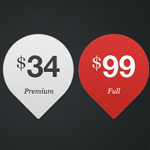Subscription Billing
Subscription Billing: The Future of Business

Take a look around. Companies all around us are using the subscription billing model. From cell phone and internet plans to television shows and movies; more and more of the products and services we use are based on subscriptions and memberships. Traditionally, only a select few services utilized the subscription business model: newspapers, magazines, and telephones.
But in the past decade or so, many businesses outside of this sector have begun to adopt this business model. Companies that produce software, physical goods and media are all flocking toward this new way of doing business (think Netflix, Hulu Plus, Shoedazzle, Adobe, Autodesk and Amazon Prime). Many of these companies come from a licensing model in which the customer pays a one-time fee and essentially buys and has complete ownership of that piece of software or media. In the case of software, the company then has the option to sell you a support plan (a warranty of sorts), in which they promise to help you if any problems arise. Traditionally, this is the way that most software companies have sold their product, through the licensing model.
So why is it that suddenly software and other companies have begun to migrate over to the subscription model? There are two main reasons for this mass exodus: money and service.
Money: The Driving Factor
One of the greatest appeals of the subscription model is the regular influx of money. This is important because companies can better predict and understand their customer-base. They can keep a lower inventory because they know on average how many orders they’ll have every month through subscriptions, which in turn lowers their operating costs. With the subscription model, customers tend to be more regular and many are likely to continue their subscription, so companies have a steady and consistent stream of revenue. The subscription business model also helps customers save money. There is often a lower upfront cost compared to licensing deals.
Consider Adobe (who just became subscription-based within the past few months), who now offers all of their software through subscription only. You now buy a subscription that grants you access to all of their software for anywhere from $30-50 a month. Compare this to their old model in which you pay a one-time fee of $1,200, with the software lasting about 2 years before a new version is released. While the overall cost over the span of 2 years may be similar, there is significantly less financial strain on the customer in the subscription model, as they don’t need to make the one-time commitment of $1,200.
Under the subscription model, customers have the option to cancel their membership at any time, so they have more control over how their money is spent.  Companies like Zuora understand the strengths of the subscription model, who has been helping businesses implement it for over 5 years. With a host of tools such as Z-Billing, Z-Force, Z-Commerce and Z-Finance, Zuora has been leading the way in helping companies transition to the subscription model.
Companies like Zuora understand the strengths of the subscription model, who has been helping businesses implement it for over 5 years. With a host of tools such as Z-Billing, Z-Force, Z-Commerce and Z-Finance, Zuora has been leading the way in helping companies transition to the subscription model.
Service: The Expectation
One of the biggest shifts that takes place is with the buyer/seller relationship itself. Many companies, including software providers, are realizing that it’s not just a product that they’re providing, but a service as well. Companies like Netflix and Hulu offer home streaming 24/7, allowing you to watch your favorite television shows and movies without driving to Blockbuster to rent and return them. It doesn’t matter that customers don’t “own” the particular piece of media that they’re consuming; instead they value the variety and the service (the promise of instant streaming anytime, anywhere) over ownership.
With software the expectations of the customer changes as well. They expect full-time customer support and updates with the product. Additionally, companies often offer different subscription plans, meaning the customer has flexibility in choosing the plan and the costs that fit their needs. This business model is also ideal for products that need to be purchased repeatedly, such as pet food. Petflow is a website that allows subscribers to purchase a plan to have pet food delivered to their doorstep each month. The logic being that, since pets will always need to eat, feeding them is a regular cost that owners have. More and more businesses are exploring this new payment option and becoming more service-oriented in the process.
Relationships: The Name of the Game
While money may be one of the driving factors of the popularity of the subscription model, in reality it is the concept and ability to build deeper customer connections that makes the subscription model so appealing and successful. Companies are beginning to change the way they do business; they are no longer sellers of a product, they are now providers of a service.
In this era, companies are realizing that service is just as important as the software they deliver. We can see this parallel in business software as well, with more and more companies offering Software-as-a-Service (SaaS) and cloud storage every day. The days when you would buy a piece of software and install it on your local machine are coming to an end, while service and convenience (accessibility from anywhere) are the new standards, and the subscription model is the perfect vehicle for this change.
Learn more about subscription billing software by downloading our free Top 10 Subscription Billing Software comparison report, or browse top subscription billing platforms and other financial management solutions on our Financial Management resource center page.






